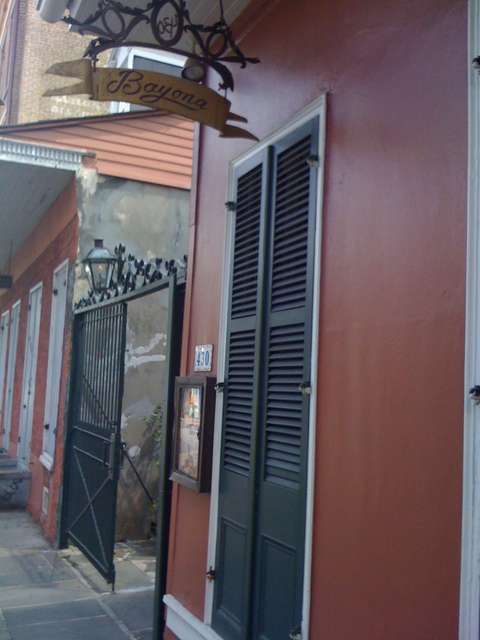A citrus pie
This recipe with the flavors of the Caribbean is adapted from Susan Spicer’s superb Crescent City Cooking. (New York 2007) We have added the lime and reduced the amount of sugar in the custard by a bit, but otherwise the recipe is all hers. It requires a fair amount of work and is unequivocally worth the effort. You will need a nine inch quiche or tart pan with straight sides.
 For the pastry:
For the pastry:
-1 ½ cups flour
-¼ teaspoon salt
-5 Tablespoons sugar
-7 Tablespoons chilled unsalted butter cut into ½ inch cubes
-1 beaten egg
-1 teaspoon vanilla extract
-a handful of dried beans for blind baking
1. Sift together the flour, salt and sugar, then dump it into a food processor.
2. Add the butter to the dry ingredients and process the pastry until it obtains the texture of coarse cornmeal, usually for no longer than 15 seconds. Do not overprocess the dough.
3. Remove the dough to a big bowl, add the egg and vanilla, and knead the dough until it adheres uniformly.
4. Roll the dough into a ball and chill it until firm, for at least 20 minutes.
Preheat the oven to 350°.
5. Butter and flour the 9 inch tart pan.
6. Roll out the dough on parchment paper sprinkled with flour until it reaches a diameter of about 10 ½ inches: Keep a little dough separate to repair the fissures that may appear during blind baking. Chill the dough for another 10 minutes.
7. Flip the dough into the tart pan, pushing it firmly into the joint where the bottom meets the sides of the pan; the dough should rise up just above the top of the rim.
8. Fold the dough above the rim back onto itself toward the inside of the pan to form a reservoir for the ‘liquidy’ (Spicer’s evocative term) custard filling.
9. Line the base of the dough with parchment or silicone paper and cover it with a layer of dried beans.
10. Bake the crust for about 15 minutes, then carefully remove the beans and parchment.
11. ‘Spackle’ (Spicer again) any fissures with the reserved dough; be sure that the pastry is sealed or the filling will leak and destroy the pie.
12. Bake the crust until it turns a light gold, usually about 10-15 minutes longer.
For the custard:
-5 eggs
-1 cup sugar minus 2 Tablespoons
-6 Tablespoons melted but not hot unsalted butter
-juice of an orange
-enough lemon and lime juice in equal amounts to total ¾ cup with the orange juice
-zest of a lemon
-zest of a lime
Lower the oven temperature to 300.
13. Beat the eggs and whisk the sugar into them. Add the juice, zest and then melted butter and whisk some more, but only until everything is barely blended.
14. Ladle the custard into the piecrust and bake until the custard just sets; a toothpick will pull away clean. Let the pie cool to allow the custard to cohere.
Notes:
- Susan Spicer found her version of the recipe in an old Francophone cookbook that she ‘loosely translates’ as Secrets of the Best Restaurants in France. How, then, do we claim this pie for Britain? Quite easily as it turns out: Custard is as English as ale. In addition, lemon curd is extraordinarily popular as a spread for toast and a filling for tarts. A number of good commercial curds are available in Britain, a few in America. Citrus, and especially its zest, also features extensively in traditional English cooking. It also quite obviously appears all over the Caribbean.
- As Spicer notes, her “recipe is a little trickier than most lemon tarts that use a precooked curd, but to me the taste is brighter and fresher, and the texture smoother than most.”
- Spicer confides that she “never thought [she] liked lemon desserts;” we have always thought we felt the same way, but this is different. So if you are leery of lemon meringue and the like, this is the pie to try.

